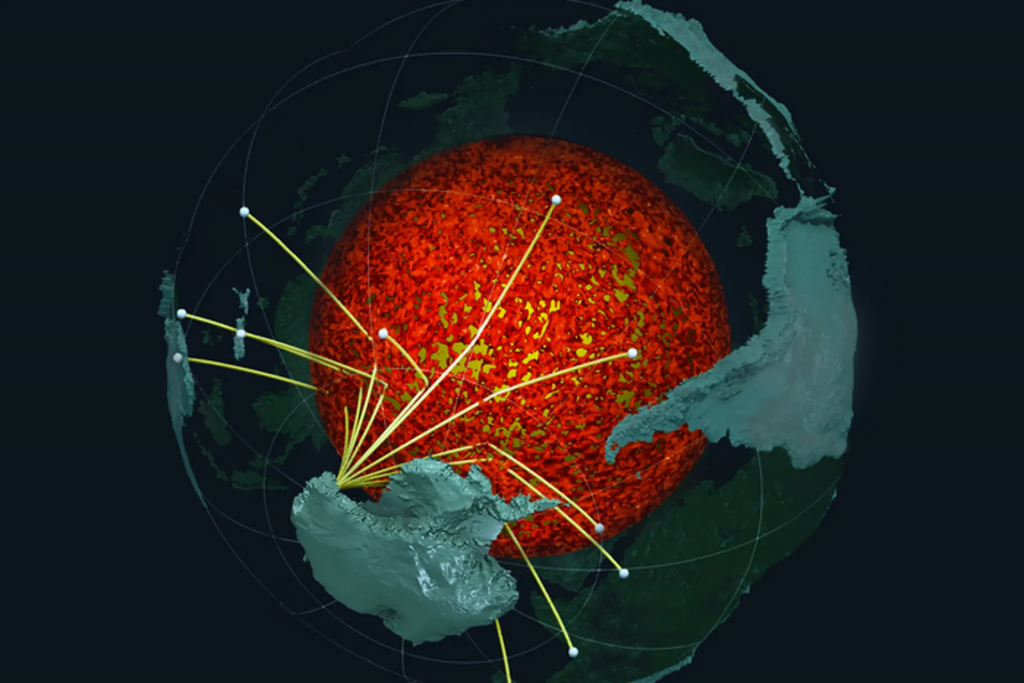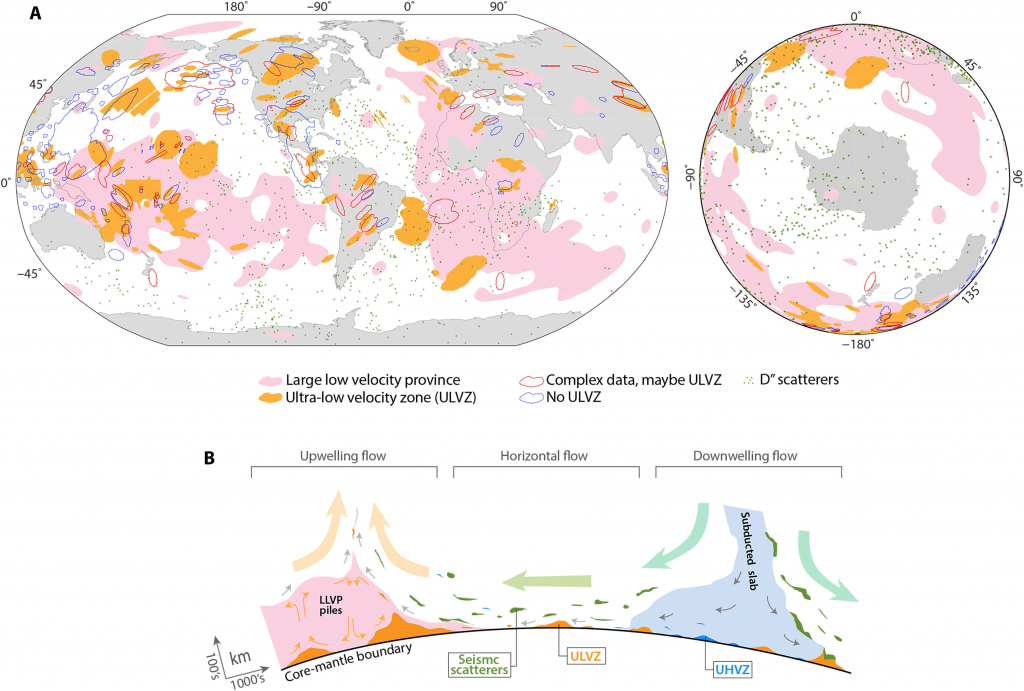Scientists have discovered an ancient ocean floor buried deep within the Earth’s core, using seismic readings gathered in Antarctica over a three-year period. This discovery could offer new insights into how oceanic materials resurface through volcanic eruptions and how heat escapes from the Earth’s core.
The research team from the University of Alabama used seismic readings to image mountains buried beneath the Antarctic ice, leading to the discovery of unusual energies after waves from earthquakes passed through the Earth’s core-mantle boundary (CMB).

The team found seismic waves slowed down when hitting a certain layer, characterizing it as an ultra-low velocity zone (ULVZ) with thin anomalous zones of material at the CMB. In addition, the seismic waves slowed down enough to suggest that it was composed of material from an ancient ocean floor that was pushed through the Earth’s mantle over hundreds of millions of years.
The researchers believe that this layer surrounds the entire core of the Earth and that it could be even denser than the liquid rock comprising the mantle.
The finding could have significant implications for our understanding of how heat escapes from the core and how oceanic materials resurface through volcanic eruptions.

According to Edward Garnero, a professor in the School of Earth and Space Exploration at Arizona State University, “Our research provides important connections between shallow and deep Earth structure and the overall processes driving our planet.”
This discovery could revolutionize our understanding of the Earth’s core and how it affects the planet’s processes. The seismic imaging technology used by the researchers provided high-resolution imaging of the Earth’s interior structure, revealing a level of complexity that was not previously known.

The ULVZ discovery suggests that an ancient ocean floor is buried deep within the Earth’s core, with implications for future geology and planetary science research.
The research has been published in the journal Science Advances.
Source: University of Alabama


